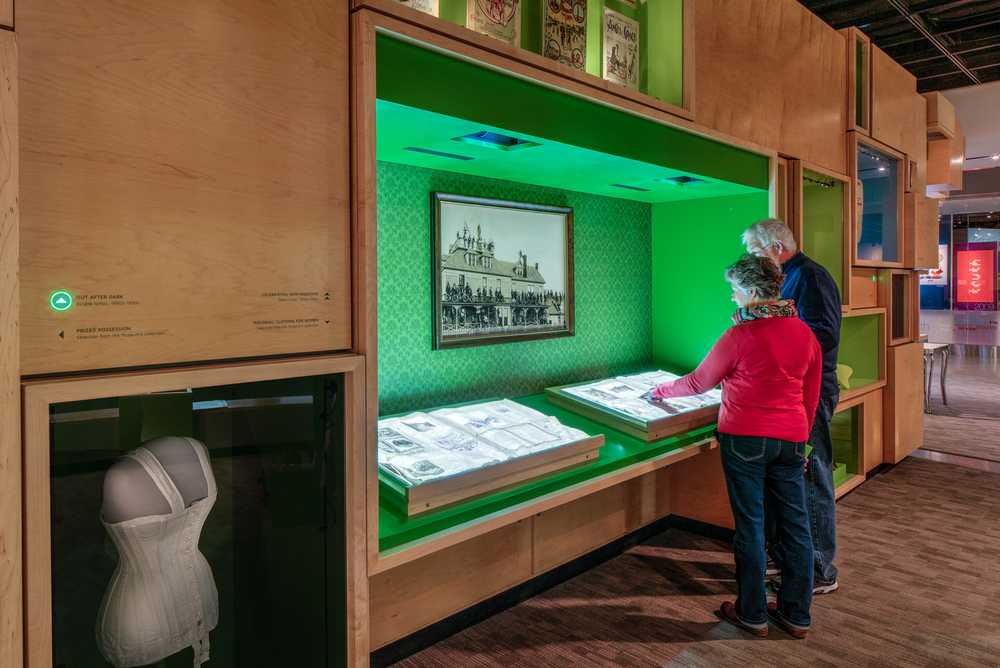Object Stack

Subverting the standard conceit of cases surrounding open areas, this artifact focused experience features a central stack, which visitors orbit. Objects are displayed at varying heights and unexpected orientation, creating surprising discoveries as visitor explore.
I joined the project after the design of the stack was complete and was tasked with developing the location plan for the artifacts inside the cases. Spending so much time with both the object list and stack design made me the resident “stack expert” on the project, which allowed me to act as the contact between the design, fabrication and graphic teams during production. Working with the rest of my team at Roto, we created interactive object cases spread throughout the stack. Glowing buttons triggered videos, light and sound effects and motors to move artifacts within their cases adding a deeper layer of visitor interaction with these otherwise protected and distant objects.
The most challenging part of my scope was undoubtedly the lighting plan. Given the client's rigorous preservation standards, fiberoptic lighting was the only viable option. This required threading optical fibers from illuminators hidden within the steel substructure to cases throughout the stack. The varying distances of the cases from the illuminators meant that each of the fiber bundles needed to be precisely measured beforehand so the fiber bundles could be hand assembled on site during installation. It was a risky plan but careful planning, solid documentation and careful execution led to a successful installation.

Photos courtesy of Roto Group LLC.